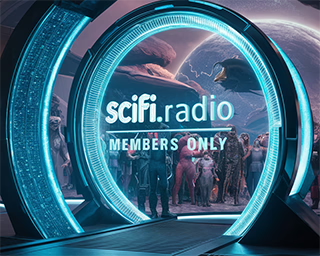

NASA launched the Surveyor 2, mission in September 1966, to explore the surface of the Moon. Alas, the spacecraft went into a tumble after a failed course-correction burn, and it slammed into the lunar surface at 2.7 kilometers per second (5,000 MPH).
But the rocket booster used during its launch followed a different trajectory into space and has now begun orbiting the Earth. That’s the conclusion of JPL astronomers who have been studying 2020 SO, an unusual object first spotted this past August with an infrared telescope in Hawaii.
NASA’s Surveyor program was designed to demonstrate the feasibility of launching, communicating with, controlling, and landing an uncrewed spacecraft on the Moon, thereby paving the way for later crewed missions. Surveyor 1, launched on May 30, 1966, was a resounding success, easily meeting its primary objectives while also returning many images of the lunar surface and critical engineering data. So NASA’s hopes were high for building on that success with the second mission. The intent was to land Surveyor 2 on the Moon just east of its predecessor to demonstrate the feasibility of an oblique approach and landing.
Surveyor 2 launched successfully on September 20, 1966 at 7:31:59.8 EST. The launch vehicle was an Atlas-Centaur rocket using liquid hydrogen and liquid oxygen as propellants. Once the Centaur’s engines were shut down and the spacecraft had coasted for 66 seconds, Surveyor 2 departed from spent Centaur. The rocket expelled its residual propellants to set a safe distance between itself and the Surveyor 2, giving it a trajectory that would miss the Moon by a good 5,675 kilometers and send the rocket into a solar orbit. That Centaur rocket is what astronomers have confirmed to be present day 2020 SO.

Everything seemed to be going smoothly for Surveyor 2. Its trajectory toward the Moon was almost perfectly on target, with just a light burn needed for a course correction 16.5 hours after launch. That’s when things went terribly wrong. The craft’s Vernier Engine 3 failed to ignite along with the others, sending Surveyor 2 tumbling through space. NASA scientists tried to get the engine started 39 times before Surveyor 2 crashed into the lunar surface on September 23, southeast of the crater Copernicus.
The object, discovered in September by astronomers searching for near-Earth asteroids from the NASA-funded Pan-STARRS1 survey telescope on Maui, garnered interest in the planetary science community due to its size and unusual orbit and was studied by observatories around the world. (This program is sometimes called Planetary Defense)
Further analysis of 2020 SO’s orbit revealed the object had come close to Earth several times over the decades, with one approach in 1966 bringing it close enough to suggest it may have originated from Earth. Comparing this data with the history of previous NASA missions, Paul Chodas, CNEOS director, concluded 2020 SO could be the Centaur upper stage rocket booster from NASA’s ill-fated 1966 Surveyor 2 mission to the Moon.

Next, through a series of follow-up observations, Vishnu Reddy and his team analyzed 2020 SO’s composition using NASA’s IRTF and compared the spectrum data from 2020 SO with that of 301 stainless steel, the material Centaur rocket boosters were made of in the 1960’s. A close match. Even closer when they added the Centaur paint. Then they found another Centaur D rocket booster from 1971 in orbit, from the launch of a communication satellite that was in Geostationary Transfer Orbit, and measured it’s spectrum. With this new data, Reddy and his team were able to compare it against 2020 SO and found the spectra to also be a match. Thus confirming the strange origin of the object – a vintage booster rocket.
“This conclusion was the result of a tremendous team effort,” said Reddy. “We were finally able to solve this mystery because of the great work of Pan-STARRS, Paul Chodas and the team at CNEOS, LBT, IRTF, and the observations around the world.”
2020 SO was captured by Earth’s gravity in November 2020 and made its closest approach to Earth on Dec. 1, 2020 and remained within Earth’s sphere of gravitational dominance – a region in space called the “Hill sphere” that extends roughly 930,000 miles (1.5 million kilometers) from our planet – until it escaped back into a new orbit around the Sun in March 2021. Astronomers expect it to return to Earth in 2036.
This isn’t the first 60s booster found in orbit: 2018 AV2 was discovered in a temporary orbit around Earth in 2018, and is suspected to be the Snoopy module from Apollo 10.
-30-
![]()
David Raiklen wrote, directed and scored his first film at age 9. He began studying keyboard and composing at age 5. He attended, then taught at UCLA, USC and CalArts. Among his teachers are John Williams and Mel Powel.
He has worked for Fox, Disney and Sprint. David has received numerous awards for his work, including the 2004 American Music Center Award. Dr. Raiklen has composed music and sound design for theater (Death and the Maiden), dance (Russian Ballet), television (Sing Me a Story), cell phone (Spacey Movie), museums (Museum of Tolerance), concert (Violin Sonata ), and film (Appalachian Trail).
His compositions have been performed at the Hollywood Bowl and the first Disney Hall. David Raiken is also host of a successful radio program, Classical Fan Club.











